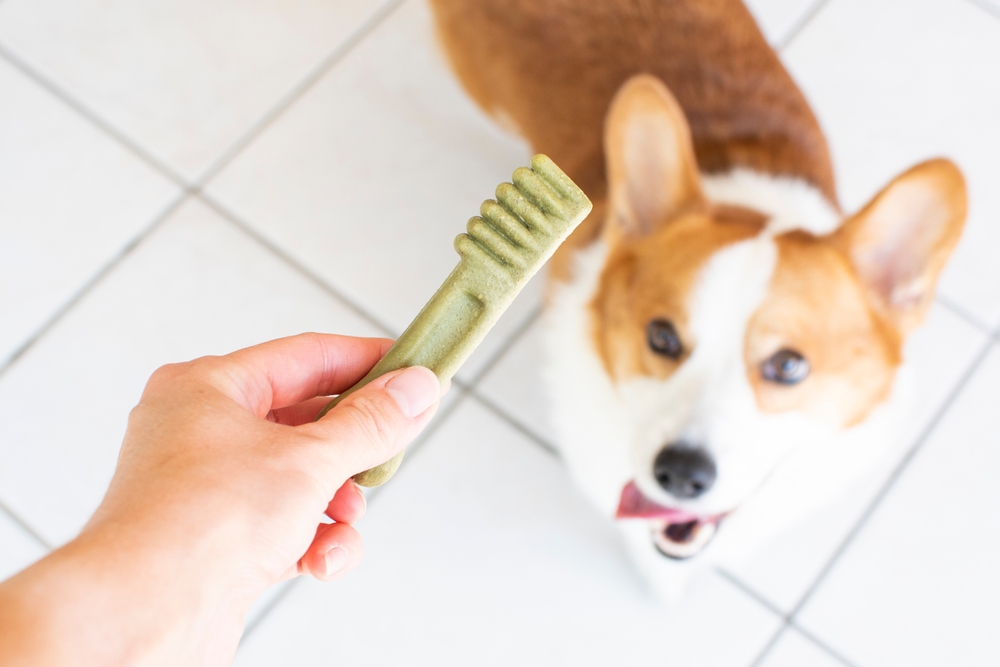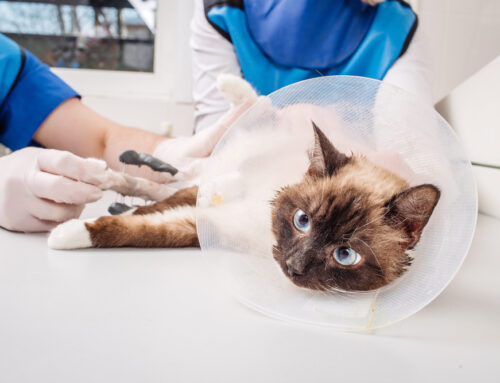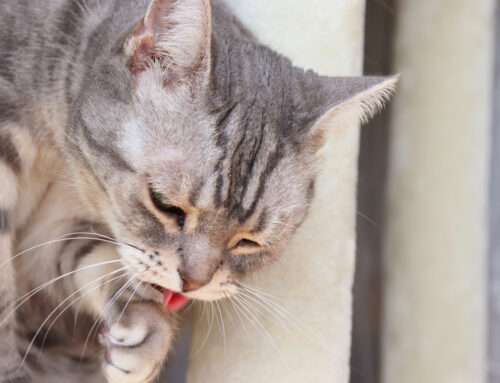Periodontal disease is pets’ most commonly diagnosed dental disease, but unfortunately, the condition is often a silent disease until the signs have become advanced. February is National Pet Dental Health Month, which is the perfect time to highlight this largely preventable condition. Our team at Greenfield Veterinary Clinic values every part of your pet’s well-being—including their oral health—and we’re getting to the root of periodontal disease, so you can learn how to keep your pet’s mouth healthy.
What is periodontal disease in pets?
Simply put, periodontal disease is a dental condition that affects the structures surrounding the teeth, primarily the gums and bone. When your pet eats, the food particles that are left behind attract bacteria in and around the gumline and tooth roots and form plaque, which mineralizes into tartar if not removed. As the bacteria invade your pet’s tooth roots, they cause painful periodontal disease that can result in serious health complications, including:
- Oral pain — Inflammation and infection in your pet’s mouth can lead to significant pain, and can potentially affect your pet’s ability to eat.
- Tooth loss — Progressive damage to a tooth’s supporting structures ultimately results in tooth loss, which also can negatively impact your pet’s ability to chew.
- Tooth root abscess — Bacteria can enter the tooth root and cause an abscess, which is extremely painful. In some cases, the abscess ruptures and creates a draining tract in your pet’s face or jaw.
- Jaw fracture — Bacterial invasion causes bone deterioration, which can lead to a pathologic bone fracture. This is mostly a problem for cats and small-breed dogs.
- Sinusitis — Periodontal disease that affects the upper teeth can migrate through the palate, creating an oronasal fistula. These openings allow food and water to enter the nasal passage from the mouth, leading to chronic sinusitis.
- Eye infection — Your pet’s eyes are close to their upper tooth roots, and periodontal disease that affects these teeth can lead to eye infections and possible vision loss.
- Organ damage — Bacteria from your pet’s mouth can enter their bloodstream and damage organs throughout their body, most commonly their heart, kidneys, and liver.
What are periodontal disease signs in pets?
Many pets with early dental disease look and behave normally, so you can easily miss early signs unless you are inspecting your pet’s teeth and mouth regularly. Bad breath usually indicates dental disease, but you also need to look for other signs. If your pet exhibits dental disease signs, schedule an evaluation with our veterinary team so we can assess your furry pal’s dental health. To check your pet for periodontal disease signs, follow these tips:
- Smell your pet’s breath — Bad breath is one of the most common dental disease signs. When cuddling your pet, sniff their breath to determine whether the odor is offensive.
- Lift your pet’s lip — Discolored teeth and red or bleeding gums also indicate dental disease. Periodically, lift your pet’s lip to evaluate their teeth and gums.
- Watch your pet eat — If your pet cocks their head, drools excessively, or chews on only one side when eating, they could have dental disease.
- Notice abnormal behavior — In some cases, a pet’s only illness sign is a behavior change. If your pet has become quiet, withdrawn, or irritable, they likely have a problem such as dental disease.
How is periodontal disease treated in pets?
Once dental disease develops, no amount of toothbrushing will eradicate tartar. The only way to remove tartar and associated oral bacteria is through professional dental cleaning. Some dental conditions become so severe that a pet’s diseased teeth must be extracted. After recovery, the pet feels much better.
How to prevent periodontal disease in pets

Fortunately, consistent at-home dental care and annual professional examinations and cleanings are effective at preventing or slowing periodontal disease progression. Daily toothbrushing with pet-safe toothpaste and providing your pet with other plaque-busting strategies, such as a dental diet, a water additive, or dental chews, can prevent tartar accumulation and the buildup’s ensuant inflammation, infection, and tooth and bone loss.
Periodontal disease can have serious consequences for your pet’s health. Fortunately, with regular at-home and professional dental care, your pet’s oral health is protected. If your pet is experiencing dental disease signs (e.g., bad breath, sensitivity, visible tartar), schedule a dental consultation with our Greenfield Veterinary Clinic team.







Leave A Comment